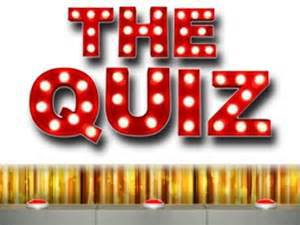Welcome to #96!
If you missed last week’s Thanksgiving-themed quiz, it’s here.
Over Thanksgiving, I binged on Manhunt: UNABOMBER. The title says it all: the show recounts the desperate search for The Unabomber. It’s link to this column is that the FBI located & arrested Ted Kaczynski in 1996.
Now, let’s spend on second on “binged.” In the preceding paragraph, I used it to mean that “over Thanksgiving, I ‘watched‘ Manhunt: Unabomber.” And I watched it like a normal person. Meaning, I did other things in between episodes. Like, get off the couch, eat, go outside, and reply to texts & calls. Unlike seasons 1 and 2 of The Fall, both seasons of Last Chance U, or my current experience with Harlen Coben’s The Five, Manhunt: Unabomber didn’t present the situation in which I’d watch an episode, check the time, convince myself “just one more tonight will be ok,” then wake up swearing at myself for watching one more one more until well after midnight. Still, it’s pretty good.
And it has several aspects that, I think, will appeal to lawyers.
I’d either forgotten or never known how the FBI tracked down Kaczynski. The show’s main character is real-life FBI agent Jim Fitzgerald. “Fitz” was a pioneer in the field of forensic linguistics. Long story short, painstakingly poring over the Manifesto for years, and apparently without the help of a computer or algorithms, he used words to profile the Unabomber. There’s an interesting scene in which a federal judge has to decide whether a person’s language pattern – “idiolect” – can provide probable cause for a search.
Two other law-related aspects of the show interested me. First, in one episode there’s a suggestion that the iconic sketch isn’t of Kaczynski at all, but a recalled memory of the sketch artist to whom the witness gave her original description. If true, it’s (another) interesting comment on the reliability of eye-witness testimony.
The second actually ties into legal ethics. Rule 1.2(d) makes it very clear that, in a criminal case, the client controls whether to plead, waive a jury trial, and testify. The show recounts the tension between Kaczynski and his legal team regarding an insanity plea – his lawyer telling him that her duty was to save his life, Kaczynski responding that he’d rather die than plead insanity. It reminded me of an issue that is pending before the U.S. Supreme Court – whether a criminal defense attorney can concede guilt over a client’s objection.
Ummm, I just got back to my laptop after re-filling my coffee and, now, don’t really remember where I going with this post. Suffice to say, Manhunt: UNABOMBER is worth checking out.
Plus, I still haven’t fully thought out my inevitable post on East Coast v. West Coast. When I do, it’ll be the final installment in my trilogy that, to date, includes Beatles v. Stones and Nirvana v. Pearl Jam. So, even though Tupac was shot in ’96, I’ll have to work my whodunnit into the next episode.
Speaking of forensic linguistics, the preceding paragraph includes exceedingly valuable clues into my position in the East Coast/West Coast debate.
Onto the quiz!
Rules
- None. Open book, open search engine, text-a-friend.
- Exception: Question 5. We try to play that one honest.
- Unless stated otherwise, the Vermont Rules of Professional Conduct apply
- Team entries welcome, creative team names even more welcome.
- E-mail answers to [email protected]
- I’ll post the answers & Honor Roll on Monday
- Please don’t use the “comment” feature to post your answers
- Please consider sharing the quiz with friends & colleagues
- Share on social media. Hashtag it – #fiveforfriday
Question 1
Fill in the blank.
Lawyer wonders whether a client’s agreement to waive a conflict complies with the rules. Researching it, Lawyer learns that ___________________ “denotes a tangible or electronic record of a communication or representation, including handwriting, typewriting, printing, photostating, photography, audio or video-recording, and e-mail.”
- A. Informed consent
- B. Writing or Written
- C. Waiver
- D. Acceptance
Question 2
The word “remonstrate” appears in comments to ONE rule. Which rule?
- A. Diligence
- B. Competence
- C. Advertising
- D. Candor Toward The Tribunal
Question 3
True or False:
If Attorney sues Client for a fee, Attorney cannot represent herself at trial if her testimony will be reasonably necessary to establishing the nature and value of the legal services that she rendered to Client.
Question 4
Attorney called me with an inquiry. I listened, then replied “over 20 years ago, the rule was changed to make it clear that it not only applies to ‘parties,’ but to any person who is represented in the matter.”
Which rule?
Question 5
I am an actress.
On TV, my name is Rachel and I am a summer associate at a law firm. For many years, I worked as a paralegal at the firm. I wanted to go to Harvard Law, but never scored high enough on the LSAT. Thanks to help & encouragement from one of the firm’s lawyers, I kept trying and, eventually, scored high enough to get into Columbia Law, which I’m currently attending.
The lawyer who helped me? His name is Mike. Some would say he’s no prince. When the firm hired him as an associate, he neglected to disclose that he had never gone to law school and wasn’t even really a lawyer. But, what a guy! We fell in love and, now, on the show, we’re engaged.
In real life, I also just got engaged. And not to some lawyer with a sketchy background.
Who am I?






